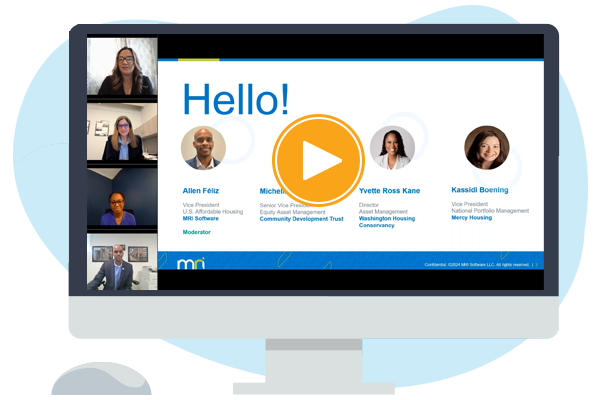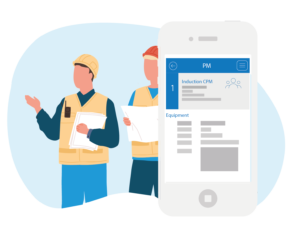Implementing an investment management system: 4 best practices to consider
This blog was written by Josh Malinoff, Principal and CEO at REdirect Consulting.
REdirect, an MRI Software Consulting Partner, is a leading provider of real estate technology solutions with a demonstrated record of assisting hundreds of clients internationally and across the real estate industry to attain their technology and business goals. Learn about how REdirect has helped new and existing MRI clients leverage their software investment.
When you’ve identified the right investment management system for your business, you probably want to jump in right away to start making use of the new, time-saving tools. But consider this “in between” time as an opportunity to review best practices for implementing a new investment management system, while thinking through existing processes, managing risk, data collection, and driving adoption.
Before implementing any system, it is wise to undertake a process review. And given that your investment management system is going to be a major component of your team’s daily work and tasks, we believe a process review prior to implementation is essential.
Assuming you’ve already done a process review and your processes and needs are well-documented, below is an exploration of other factors to consider and how to successfully get started with implementing your new technology.
1. Prepare to automate
Since you are just getting started with your investment management software, it’s likely that you still have some manual, paper-based tasks. Anything that still lives in filing cabinets should be top of your list to automate.
While some of the preparation you’ll need to do here will have been taken care of by the process review, make sure you are mapping processes with a heavy consideration of your future state. This might entail streamlining processes which previously had many touchpoints and limited controls.
For example, your distribution process may currently require offline calculations and manual data entry into your accounting and bank systems. Once automated, the new process will be entirely contained in your investment management system with robust controls, a much faster cycle time, and reduced risk of error.
The goal is to move the bulk of your tasks into the new system. You might be surprised to learn that some processes are easily automated in the system. For example, we find that many investment clients assume they have to do waterfall calculations “manually,” since they are so complex. Believe it or not, you don’t have to continue to manage these calculations within Excel.
The MRI Software real estate investment platform, for instance, has complex functionality to manage waterfall calculations within the system, which helps reduce errors, gain control, and have an easier audit experience.
2. Empower users to take over
Beyond financials and the back office, investor portals can offer a streamlined and better marketed experience for new investors (and extend wallet share with existing investors). CRM capabilities of your investment management system can help you greatly. Be sure to get your self-service portal for investors up and running as early in your fundraising cycle as possible.
As we all know, receiving a quarterly report doesn’t cut it anymore. Modern investors want anytime access to their investment performance and returns. Allowing investors to download reports and check in on investments themselves will save you a lot of time (and emails). These features of the system can also help you market your funds better and accelerate your firm’s growth.
3. Good data is your best friend
Data conversion is always a hot topic because investment management implementations frequently replace manual processes, so the original data does not typically reside in a single system. That original data is often spread across multiple Excel spreadsheets and PDF documents. Because people have their own preferences and habits when it comes to maintaining and manipulating files, we often find inconsistencies in data when stored outside of an investment management system.
This data spread is especially problematic when your staff is working in files with different versions, naming conventions (or lack thereof), and sending files back and forth. Normalizing your data is critical to make sure you retain the historical information that benefits your long term operations and accounting.
MRI Investment Accounting offers a great opportunity to run reports directly without needing to download or manipulate data outside of the system. And fortunately the system can handle both key reporting needs for the funds as well as for your investors. The report design functionality can help you with both internal and external reporting needs. Though configurations in your new system are very personal and specific to your firm, the system is flexible enough to allow your needs to be met without too much tweaking.
4. Manage the change before you “go live”
It is critical to do thorough testing before you completely shift over to your new system. Build “user acceptance testing,” into your plan and timeline. On paper the system might be a great fit, but if your team doesn’t like it, isn’t comfortable using it, or if it just doesn’t fit what they are looking for, you will need to offer some change management. If your existing processes are heavily ingrained, it will take more time and effort to get the team’s buy-in.
It is important to carefully manage change, particularly with users who may be resistant. REdirect’s implementations build in significant hand-holding before the system goes live. We believe this support is essential to ensure the system is being used properly in the long term. User acceptance includes training as well as expectation management. Giving your team a forum to ask questions and practice using the software before it’s live is a great way to get them onboard faster.
Thorough testing also helps ensure that everything in the system functions as it should and that there are no unexpected hiccups once you are live. It is possible and sometimes quite common to take a phased approach with your go-live. You may choose to exclude funds that are winding down in the nearterm, and move new and upcoming funds onto the new system. This phased approach can offer an interesting ROI example when you can see the systems side by side.
If you become overwhelmed by the process of configuring and populating your system, undertaking data collection and normalization, or making specific and strategic analysis considerations, working with a consulting firm can streamline a lot of those struggles.
REdirect Consulting is one of the leading experts on implementing investment management software solutions and can aid in any (and all) steps of the process, from full implementation and customizations, to training and ongoing support. If you have any questions about the next steps for your firm’s technology, reach out to us here.
Affordable Housing Asset Manager Insights: Maximize Portfolio Performance by Supporting Housing Operators
From rising operational costs to increased demand for flexibility and technology, asset managers are navigating unique challenges to support property management teams while ensuring portfolio health and resilience. Recent MRI research delves into the…

